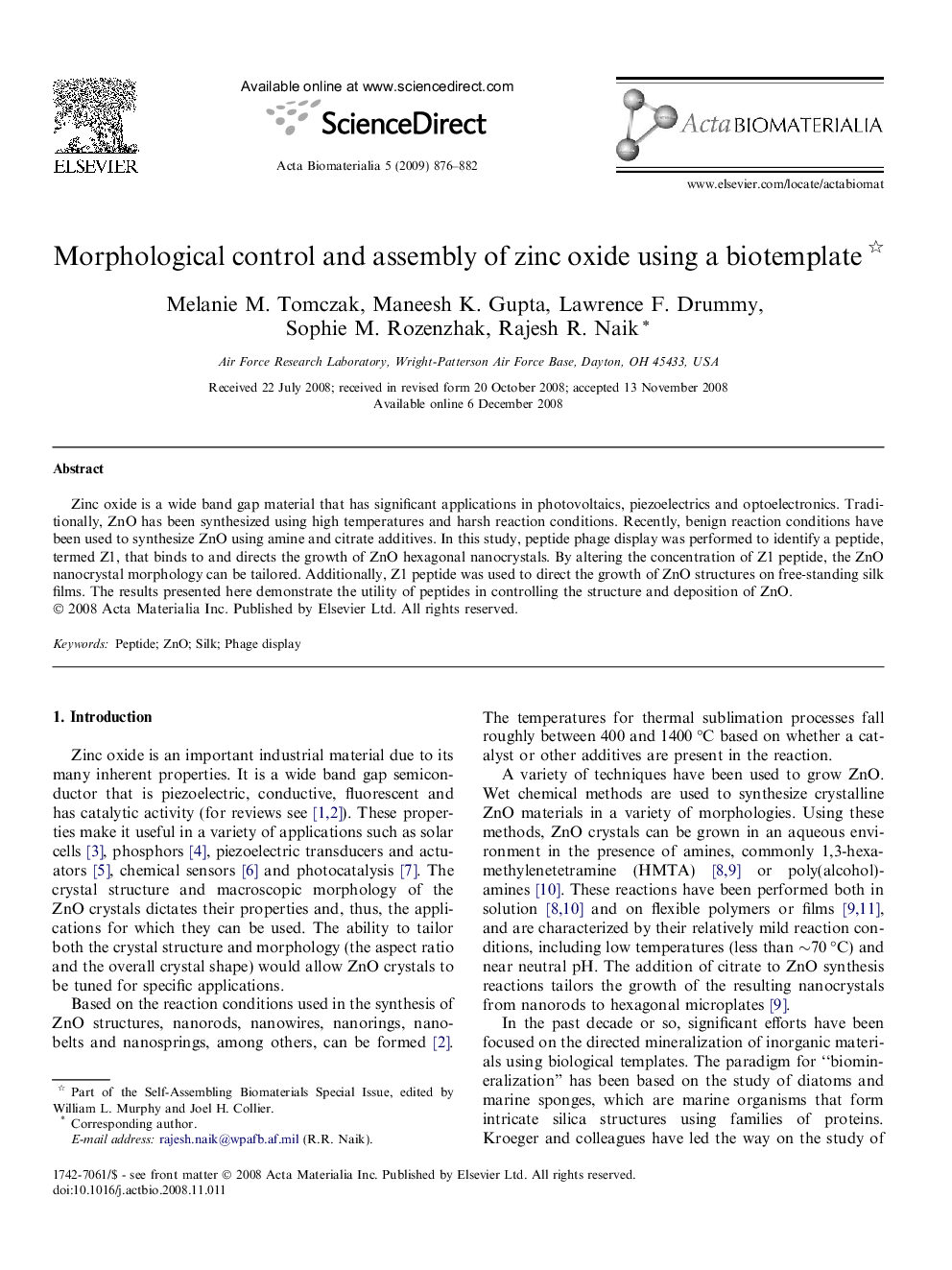| Article ID | Journal | Published Year | Pages | File Type |
|---|---|---|---|---|
| 2224 | Acta Biomaterialia | 2009 | 7 Pages |
Zinc oxide is a wide band gap material that has significant applications in photovoltaics, piezoelectrics and optoelectronics. Traditionally, ZnO has been synthesized using high temperatures and harsh reaction conditions. Recently, benign reaction conditions have been used to synthesize ZnO using amine and citrate additives. In this study, peptide phage display was performed to identify a peptide, termed Z1, that binds to and directs the growth of ZnO hexagonal nanocrystals. By altering the concentration of Z1 peptide, the ZnO nanocrystal morphology can be tailored. Additionally, Z1 peptide was used to direct the growth of ZnO structures on free-standing silk films. The results presented here demonstrate the utility of peptides in controlling the structure and deposition of ZnO.
